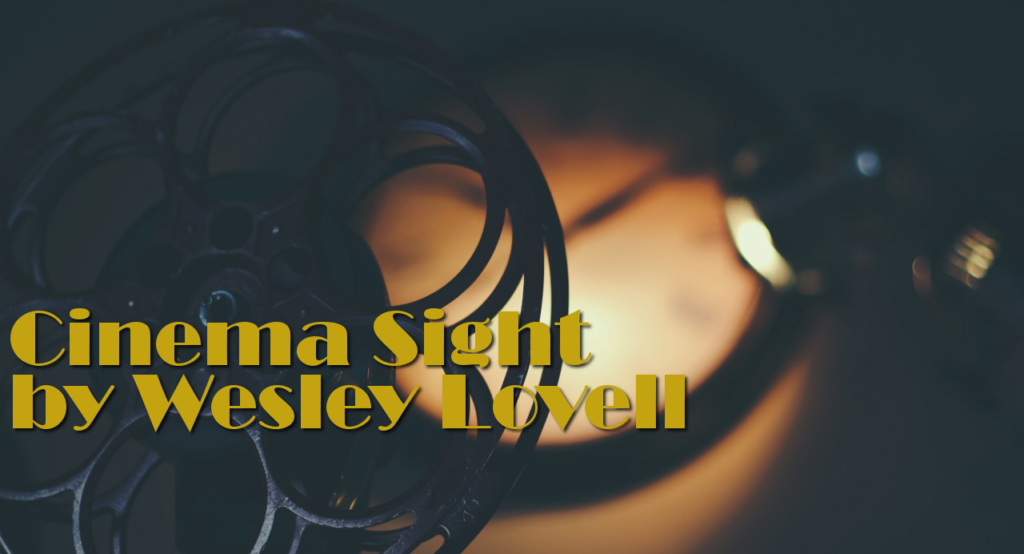
When putting together last month’s look at Foreign Language Films at the Oscars, I came across a lot of interesting data that would make for a very long post. As such, I broke it down into two different posts, finishing up with this article.
Finding a place to start with this set of statistics is a daunting task. There are so many angles at which to go at these numbers that starting with a quick comparison is probably best. 300 films have been nominated for Best Foreign Language Film at the Oscars to date. That’s 5 nominees a year for the last 60 years (2016 was the 60th anniversary of the category). This number does not include the eight films that won Oscars prior to the category’s existence, but it does include the only film ever disqualified for this category: A Place in the World. Uruguay submitted the film for the 1992 Academy Awards, but it was later revealed that artistic control was predominantly held by Argentina and thus the film was ruled ineligible.

Among these 152 films, three of them never would have been eligible for the main category because they were US productions. The Passion of the Christ, directed by Mel Gibson, was the first in 2004 scoring three nominations for his film filmed in Aramaic. Two years later, the other two films, Clint Eastwood’s Japanese film Letters from Iwo Jima (companion to his earlier 2006 English language film following the war from the American side: Flags of Our Fathers) and Apocalypto, also by Gibson and filmed in Mayan. Letters received four nominations while Apocalypto received three. Letters is the only winner of the bunch taking home an Oscar for Sound Editing.

Another interesting note is that Eric Rohmer’s My Night at Maud’s was one of a handful of foreign language films nominated in one year for Best Foreign Language Film and in a completely different year for other Oscar categories. Later, I’ll go into more detail about this phenomenon, but for now, the reason Maud is an interesting case study is because of its title. The film was nominated first in 1969 under the title My Night with Maud. When it was released formally in 1970 and earned a nomination for Best Original Story and Screenplay, it was nominated under the title My Night at Maud’s. Films often go through title changes in their international releases, but this was the only time a film managed to get nominated under different titles in different years.
Looking at the overall numbers, there were a total of 152 foreign language films nominated outside of Best Foreign Language Film. Of those, only 53 were also Best Foreign Language Film nominees. 28 of those won Oscars for Best Foreign Language Film. Additionally, there were only 9 Best Foreign Language Film nominees that took home any Oscars at all, including Best Foreign Language Film, two of which didn’t win the Best Foreign Language Film Oscar as one of its wins.

That “major categories” designation I made earlier is an important one. This data was collected from the Academy’s own database and they have specifically referenced that the documentary and short film categories have not been fully catalogued in terms of which were made in a foreign language and which were not. As such, those 44 titles that were nominated in those four categories and properly credited are not included in my list.
What’s additionally fascinating about the foreign language film nominees is the distribution across categories. Every category except two have had a foreign language film nominated. Those categories are Best Supporting Actor and Best Visual Effects. The most common category for a foreign language nominee to appear was writing where, across the various writing categories, 60 films have been nominated. Second on that list is Best Directing with 26 followed closely by Costume Design with 25. Rounding out the top five are Art Direction with 19 and the music categories with a combined 19 nominations. I’ve included a list of categories in which various films have been nominated. While you can figure out which are which, I’ve highlighted the first film (and year) nominated in each category along with the most recent nominee (and year).
Categories Outside of Foreign Language Film with Foreign Language Nominees
Picture – 8 (first: Grand Illusion (1938); most recent: Amour (2012))
Animated Feature – 7 (first: The Triplets of Belleville (2003); most recent: My Life As a Zucchini (2016))
Directing – 26 (first: La Dolce Vita (1961); most recent: Amour (2012))
Actor – 9 (first: Divorce–Italian Style (1962); most recent: Biutiful (2010))
Actress – 16 (first: Two Women (1961); most recent: Elle (2016))
Supporting Actress – 1 (first: Day for Night (1974); most recent: Day for Night (1974))
Adapted Screenplay – 15 (first: Sundays and Cybele (1963); most recent: The Diving Bell and the Butterfly (2007))
Original Screenplay – 37 (17 as Story and Screenplay) (first: Children of Paradise (1946); most recent: Amour (2012))
Other Writing – 8 (first: Open City (1946); most recent: Umberto D (1956))
Original Song – 5 (first: The Umbrellas of Cherbourg (1965); most recent: Paris 36 (2009))
Original Score – 5 (first: The Umbrellas of Cherbourg (1965); most recent: Pan’s Labyrinth (2006))
Music (Other) – 9 (first: Khovanshchina (1961); most recent: Life Is Beautiful (1998))
Film Editing – 7 (first: Z (1969); most recent: The Diving Bell and the Butterfly (2007))
Cinematography – 15 (first: Cries and Whispers (1973); most recent: Ida (2014))
Art Direction – 19 (first: A Nous La Liberte (1931/32); most recent: Pan’s Labyrinth (2006))
Costume Design – 25 (first: The Earrings of Madame de… & Gate of Hell (1954); most recent: The Grandmaster (2013))
Makeup & Hairstyling – 6 (first: Quest for Fire (1982); most recent: A Man Called Ove (2016))
Sound – 2 (first: Das Boot (1982); most recent: Amelie (2001))
Sound Effects Editing – 1 (first: Das Boot (1982); most recent: Das Boot (1982))
{Documentary Feature – 23 (since the Academy started tracking)}
{Documentary Short – 9 (since the Academy started tracking)}
{Animated Short Film – 3 (since the Academy started tracking)}
{Live-Action Short Film – 9 (since the Academy started tracking)}

Foreign language films have never won in Best Picture, Animated Feature (I am specifically excluding Hayao Miyazaki’s Spirited Away here. The film, although originally released in Japanese in its home country, was released in the U.S. with an English dub.), Directing, Supporting Actress, Adapted Screenplay, Original Song, or Sound Mixing. Below is a breakdown of wins by category along with the first and most recent films to win the awards.
Categories Outside of Foreign Language Film with Foreign Language Winners
Actor – 1 (first: Life Is Beautiful (1998); most recent: Life Is Beautiful (1998))
Actress – 2 (first: Two Women (1961); most recent: La Vie en Rose (2007))
Original Screenplay – 2 (first: The Red Balloon (1956); most recent: Talk to Her (2002))
Other Writing – 1 (first: Marie-Louise (1945); most recent: Marie-Louise (1945))
Original Song – 1 (first: The Motorcycle Diaries (2004); most recent: The Motorcycle Diaries (2004))
Original Score – 2 (first: The Red Violin (1999); most recent: Crouching Tiger, Hidden Dragon (2000))
Music (Other) – 2 (first: The Postman (1995); most recent: Life Is Beautiful (1998))
Film Editing – 1 (first: Z (1969); most recent: Z (1969))
Cinematography – 4 (first: Cries and Whispers (1973); most recent: Pan’s Labyrinth (2006))
Art Direction – 3 (first: Fanny & Alexander (1983); most recent: Pan’s Labyrinth (2006))
Costume Design – 4 (first: Gate of Hell (1954); most recent: Cyrano de Bergerac (1990))
Makeup & Hairstyling – 3 (first: Quest for Fire (1982); most recent: La Vie en Rose (2007))
Sound Effects Editing – 1 (first: Letters from Iwo Jima (2006); most recent: Letters from Iwo Jima (2006))

The rules have changed a great deal over the course of the category’s 60-year existence, so getting into details is difficult and relatively pointless in this given situation, though one rule is of particular interest. If a film’s producer wants it to be nominated in other categories at the Oscars, it must release in the United States within the current calendar year (Jan. 1-Dec. 31, 2017 for the 90th Oscars for example). Here’s where the rules get a teensy bit confusing. If a film is not nominated for an Oscar for Best Foreign Language Film and it releases in the U.S. during the subsequent eligibility period, it can be nominated at the Oscars. If it is nominated in Best Foreign Language Film, it is ineligible for consideration if it releases in the U.S. in the next year.

This all leads to a vaguery in the rules some decades ago that put the above rules into place. For a period from 1961 to 1974, a number of films nominated for Best Foreign Language Film were nominated one year for that and a different year for another category. The first film to do this was Sweden’s Through a Glass Darkly. That film was nominated for Best Foreign Language Film in 1961. In 1962, it was nominated again, this time in Best Original Story and Screenplay. A total of 13 films took advantage of this loophole, leading the Academy to fill it. Below is a list of the films that managed this now impossible feat.
Nominated for Foreign Language Film One Year and a Different Category in a Different Year
Through a Glass Darkly – Foreign Language Film (1961); Original Story and Screenplay (1962)
Sundays and Cybele – Foreign Language Film (1962); Adapted Screenplay and Adaptation or Treatment Score (1963)
The Four Days of Naples – Foreign Language Film (1962); Original Story and Screenplay (1963)
Marriage Italian Style – Actress (1964); Foreign Language Film (1965)
Woman in the Dunes – Foreign Language Film (1964); Directing (1965)
The Umbrellas of Cherbourg – Foreign Language Film (1964); Original Story and Screenplay, Substantial Original Score, Adaptation or Treatment Score, Original Song (1965)
The Shop on Main Street – Foreign Language Film (1965); Actress (1966)
The Battle of Algiers – Foreign Language Film (1966); Directing and Original Story and Screenplay (1968)
My Night at Maud’s – Foreign Language Film (1969); Original Story and Screenplay (1970)
Investigation of a Citizen Above Suspicion – Foreign Language Film (1970); Original Story and Screenplay (1971)
The Emigrants – Foreign Language Film (1970); Picture, Directing, Actress, and Adapted Screenplay (1971)
Day for Night – Foreign Language Film (1973); Directing, Actress, Original Screenplay (1974)
Amarcord – Foreign Language Film (1974); Directing and Original Screenplay (1975)

One of the criticisms the Academy has received over the years is the lack of recognition for films made in foreign languages. This becomes especially tricky when their own Foreign Language Film category has strict rules and a limit of nominations to one per country of origin. That means some foreign language films don’t have the added benefit of a nomination in that category to bolster its chances for Oscar nominations.

The largest number of individual films nominated at the Oscars in a given year is a tie between 1961 and 2004, each of which saw six foreign language films nominated for individual, non-Best Foreign Language Film awards. Below that, with 5 nominations apiece were the years 1954, 1956, 1966, and 1975. With four or more nominees, the group grows to include 1971 and 2009. Given all the flack the Academy gets, that’s still a strong showing.

One last little tidbit about spans, for those films with three or more films cited in a single year. The longest consecutive run of three-plus nominees was from 1961 to 1966, a six year span where three or more foreign films were nominated. The closest runs beyond that were the three years from 1954 to 1956 and the three years from 1970 to 1972. As for the longest spans without seeing 3 or more films nominated, that distinction is held by the period from 1988 to 2002, a stunning 15-year gap, which is one of the primary reasons some griped about the lack of foreign representation. After that, the longest spans were from 1957 to 1960 and 1977 to 1981, five each; and the four years from 1983 to 1986. At the end of this article is a list of all years where three or more foreign language films were nominated at the Oscars.

While more than one foreign language film winning in a given year is an interesting infrequent situation, the number of films that have managed to win more than one award overall is an even more compelling set of statistics. If we look only at foreign language films that won awards other than Best Foreign Language Film, there have only been five films to win multiple awards. Fanny & Alexander was the first to win multiple awards outside of Best Foreign Language Film, taking 3 such prizes. However, it wouldn’t be until 2006 that a foreign language film won multiple awards without also winning the Foreign Language Film category. 2006’s Pan’s Labyrinth was the first, winning three awards. This was followed by the only other film to accomplish such a feat in 2007 when La Vie en Rose won Best Actress and Best Makeup.

Foreign Language Films That Have Won More Than One Oscar, Excluding Best Foreign Language Film
1983 – Fanny & Alexander x3
1998 – Life Is Beautiful x2
2000 – Crouching Tiger, Hidden Dragon x3
2006 – Pan’s Labyrinth x3
2007 – La Vie en Rose x2
Overall, including Best Foreign Language Film, nine total foreign language films have won more than one award. Gate of Hell was the first in 1954 when it won both Best Costume Design and the honorary Oscar for Best Foreign Language Film. Excluding Pan’s Labyrinth and La Vie en Rose, seven total films have won Best Foreign Language Film and at least one other Oscar. Fanny & Alexander holds the record of four wins set in 1983, which it now shares with Crouching Tiger, Hidden Dragon, which received its four wins in 2000.
Foreign Language Films Winning More Than One Oscar, Including Best Foreign Language Film)
1954 – Gate of Hell x2 (Best Foreign Language Film Winner)
1963 – 8-1/2 x2 (Best Foreign Language Film Winner)
1966 – A Man and a Woman x2 (Best Foreign Language Film Winner)
1969 – Z x2 (Best Foreign Language Film Winner)
1983 – Fanny & Alexander x4 (Best Foreign Language Film Winner)
1998 – Life Is Beautiful x3 (Best Foreign Language Film Winner)
2000 – Crouching Tiger, Hidden Dragon x4 (Best Foreign Language Film Winner)
2006 – Pan’s Labyrinth x3
2007 – La Vie en Rose x2

At the top of the list of nominees is Federico Fellini, who across his varied career, received eleven total Oscar nominations. Second to Fellini was another prolific foreign director, Ingmar Bergman, with nine nominations. Third place goes to the less familiar name of Piero Gherardi, a prominent Italian production designer and costume designer who worked frequently with Fellini, with fourth place a tie between Sergio Amidei, Jacques Demy, Michel Legrand, and Tullio Pinnelli. They each received four Oscar nominations. Eight more individuals received 3 nominations, while the remainder who received two nominations tallies to 44, making a total of 54 individuals to earn multiple Oscar nominations for foreign language films.

Without digging specifically into figures I did not collect for this article, it appears that among the talents that successfully bridged the gap between foreign language work and English language work, Ang Lee appears to have been most successful. Lee has been nominated five times, twice for Crouching Tiger, Hidden Dragon and three times for his English language work. He has two Oscars, both for directing and both were for his English Language work (Brokeback Mountain and Life of Pi). This is all in addition to the three Taiwanese films he directed that were nominated for Best Foreign Language Film, the last of them, Crouching Tiger, actually winning the award.
It might be interesting to explore this dynamic, but doing so would require an entirely different article on the subject, but for now, this brings an end to my analyses of foreign language films at the Oscars. Below are several lists that contain the data referenced above. Next month, we’ll take a different tack and look at ageism at the Oscars, specifically in how the acting categories break down for younger and older performers and whether the observable bias between men and women has improved or worsened in the last few years and decades.
Films Nominated Outside of Best Foreign Language Film
1931/32 – A Nous La Liberte (Art Direction)
1938 – Grand Illusion (Best Picture)
1945 – Marie-Louise (Writing {WINNER})
1946 – Children of Paradise (Original Screenplay)
1946 – Open City (Screenplay)
1947 – A Cage of Nightingales (Motion Picture Story)
1947 – Shoe-Shine (Original Screenplay)
1949 – The Bicycle Thief (Screenplay)
1949 – Paisan (Story and Screenplay)
1950 – Bitter Rice (Motion Picture Story)
1951 – La Ronde (2 – Art Direction; Screenplay)
1952 – Rashomon (Art Direction)
1954 – Le Plaisir (Art Direction)
1954 – The Earrings of Madame de… (Costume Design)
1954 – Gate of Hell (Costume Design {WINNER})
1954 – Bread, Love and Dreams (Motion Picture Story)
1954 – Forbidden Games (Motion Picture Story)
1955 – Ugetsu (Costume Design)
1955 – The Sheep Has Five Legs (Motion Picture Story)
1955 – Mr. Hulot’s Holiday (Story and Screenplay)
1956 – The Magnificent Seven (2 – Art Direction; Costume Design)
1956 – The Proud and the Beautiful (Motion Picture Story)
1956 – Umberto D. (Motion Picture Story)
1956 – La Strada (Original Screenplay)
1956 – The Red Balloon (Original Screenplay {WINNER})
1957 – Vitelloni (Original Story and Screenplay)
1959 – The 400 Blows (Original Story and Screenplay)
1959 – Wild Strawberries (Original Story and Screenplay)
1961 – Two Women (Actress {WINNER})
1961 – La Dolce Vita (4 – Art Direction; Costume Design {WINNER}; Directing; Original Story and Screenplay)
1961 – Yojimbo (Costume Design)
1961 – Khovanshchina (Musical Scoring)
1961 – Ballad of a Soldier (Original Story and Screenplay)
1961 – General Della Rovere (Original Story and Screenplay)
1962 – Divorce–Italian Style (3 – Actor; Directing; Original Story and Screenplay {WINNER})
1962 – Last Year at Marienbad (Original Story and Screenplay)
1962 – Through a Glass Darkly (Original Story and Screenplay) 1961
1963 – 8-1/2 (4 – Art Direction; Costume Design {WINNER}; Directing; Original Story and Screenplay)
1963 – Sundays and Cybele (2 – Adaptation or Treatment Score; Adapted Screenplay) 1962
1963 – The Four Days of Naples (Original Story and Screenplay) 1962
1964 – Marriage Italian Style (Actress) 1965
1964 – The Organizer (Original Story and Screenplay)
1964 – That Man from Rio (Original Story and Screenplay)
1965 – Woman in the Dunes (Directing) 1964
1965 – The Umbrellas of Cherbourg (4 – Substantially Original Score; Adaptation or Treatment Score; Original Song {“I Will Wait for You”}; Original Story and Screenplay) 1964
1965 – Casanova ’70 (Original Story and Screenplay)
1966 – A Man and a Woman (3 – Actress; Directing; Original Story and Screenplay {WINNER})
1966 – The Shop on Main Street (Actress) 1965
1966 – The Gospel According to St. Matthew (3 – Art Direction; Costume Design; Adaptation or Treatment Score)
1966 – Juliet of the Spirits (2 – Art Direction; Costume Design)
1966 – Mandragola (Costume Design)
1967 – La Guerre Est Finie (Original Story and Screenplay)
1968 – War and Peace (Art Direction)
1968 – The Battle of Algiers (2 – Directing; Original Story and Screenplay) 1966
1968 – The Young Girls of Rochefort (Musical Score)
1969 – Z (4 – Directing; Film Editing {WINNER}; Picture; Adapted Screenplay)
1970 – Fellini Satyricon (Directing)
1970 – Sunflower (Original Score)
1970 – My Night at Maud’s (Original Story and Screenplay) 1969
1971 – Tchaikovsky (Adaptation and Original Song Score)
1971 – The Conformist (Adapted Screenplay)
1971 – The Garden of the Finzi Continis (Adapted Screenplay)
1971 – Investigation of a Citizen Above Suspicion (Original Story and Screenplay) 1970
1972 – The Emigrants (4 – Actress; Directing; Picture; Adapted Screenplay) 1971
1972 – The Discreet Charm of the Bourgeoisie (Original Story and Screenplay)
1972 – Murmur of the Heart (Original Story and Screenplay)
1973 – Cries and Whispers (5 – Cinematography {WINNER}; Costume Design; Directing; Picture; Original Story and Screenplay)
1974 – Day for Night (3 – Supporting Actress; Directing; Original Screenplay) 1973
1975 – The Story of Adele H. (Actress)
1975 – The Magic Flute (Costume Design)
1975 – Amarcord (2 – Directing; Original Screenplay) 1974
1975 – And Now My Love (Original Screenplay)
1975 – Scent of a Woman (Adapted Screenplay)
1976 – Seven Beauties (3 – Actor; Directing; Original Screenplay)
1976 – Cousin, Cousine (2 – Actress; Original Screenplay)
1976 – Face to Face (2 – Actress; Directing)
1977 – A Special Day (Actor)
1977 – That Obscure Object of Desire (Adapted Screenplay)
1978 – Autumn Sonata (2 – Actress; Original Screenplay)
1979 – La Cage aux Folles (3 – Costume Design; Directing; Adapted Screenplay)
1980 – Kagemusha (Art Direction)
1980 – Mon Oncle d’Amerique (Original Screenplay)
1982 – La Traviata (2 – Art Direction; Costume Design)
1982 – Das Boot (6 – Cinematography; Costume Design; Directing; Film Editing; Sound; Sound Effects Editing; Adapted Screenplay)
1982 – Quest for Fire (Makeup {WINNER})
1983 – Fanny & Alexander (5 – Art Direction {WINNER}; Cinematography {WINNER}; Costume Design {WINNER}; Directing; Original Screenplay)
1983 – The Return of Martin Guerre (Costume Design)
1985 – Ran (4 – Art Direction; Cinematography; Costume Design {WINNER}; Directing)
1985 – The Official Story (Original Screenplay)
1986 – Otello (Costume Design)
1987 – Dark Eyes (Actor)
1987 – My Life As a Dog (2 – Directing; Adapted Screenplay)
1987 – Au Revoir Les Enfants (Original Screenplay)
1988 – Pelle the Conqueror (Actor)
1989 – Camille Claudel (Actress)
1989 – The Bear (Film Editing)
1990 – Cyrano de Bergerac (4 – Actor; Art Direction; Costume Design {WINNER}; Makeup)
1991 – Madame Bovary (Costume Design)
1991 – Europa Europa (Adapted Screenplay)
1992 – Indochine (Actress)
1993 – Farewell My Concubine (Cinematography)
1994 – Red (3 – Cinematography; Directing; Original Screenplay)
1994 – Queen Margo (Cinematography)
1995 – The Postman (5 – Actor; Directing; Original Dramatic Score {WINNER}; Picture; Adapted Screenplay)
1995 – Shanghai Triad (Cinematography)
1998 – Life Is Beautiful (6 – Actor {WINNER}; Directing; Film Editing; Original Dramatic Score {WINNER}; Picture; Original Screenplay)
1998 – Central Station (Actress)
1999 – The Red Violin (Original Score {WINNER})
2000 – Crouching Tiger, Hidden Dragon (9 – Art Direction {WINNER}; Cinematography {WINNER}; Costume Design; Directing; Film Editing; Original Score {WINNER}; Original Song {“A Love Before Time”}; Picture; Adapted Screenplay)
2000 – Malena (2 – Cinematography; Original Score)
2001 – Amelie (4 – Art Direction; Cinematography; Sound; Original Screenplay)
2002 – Talk to Her (2 – Directing; Original Screenplay {WINNER})
2002 – Y Tu Mama Tambien (Original Screenplay)
2003 – The Triplets of Belleville (2 – Animated Feature; Original Song {“Belleville Rendez-vous”})
2003 – City of God (4 – Cinematography; Directing; Film Editing; Adapted Screenplay)
2003 – The Barbarian Invasions (Original Screenplay)
2004 – Maria Full of Grace (Actress)
2004 – A Very Long Engagement (2 – Art Direction; Cinematography)
2004 – House of Flying Daggers (Cinematography)
2004 – The Sea Inside (Makeup)
2004 – The Motorcycle Diaries (2 – Original Song; Adapted Screenplay)
2004 – The Chorus (Original Song {“Look to Your Path”})
2004 – The Passion of the Christ (Cinematography; Makeup; Original Score)
2006 – Volver (Actress)
2006 – Pan’s Labyrinth (5 – Art Direction {WINNER}; Cinematography {WINNER}; Makeup {WINNER}; Original Score; Original Screenplay)
2006 – Curse of the Golden Flower (Costume Design)
2006 – Letters from Iwo Jima (Directing; Picture; Original Screenplay; Sound Editing (WINNER))
2006 – Apocalypto (Makeup; Sound Editing; Sound Mixing)
2007 – La Vie en Rose (3 – Actress {WINNER}; Costume Design; Makeup {WINNER})
2007 – Persepolis (Animated Feature)
2007 – The Diving Bell and the Butterfly (4 – Cinematography; Directing; Film Editing; Adapted Screenplay)
2009 – The White Ribbon (Cinematography)
2009 – Coco Before Chanel (Costume Design)
2009 – Il Divo (Makeup)
2009 – Paris 36 (Original Song)
2010 – Biutiful (Actor)
2010 – I Am Love (Costume Design)
2011 – A Cat in Paris (Animated Feature)
2011 – Chico & Rita (Animated Feature)
2011 – A Separation (Original Screneplay)
2012 – Amour (4- Actress; Directing; Picture; Original Screenplay)
2013 – Ernest & Celestine (Animated Feature)
2013 – The Wind Rises (Animated Feature)
2013 – The Grandmaster (2 – Cinematography; Costume Design)
2014 – Two Days, One Night (Actress)
2014 – The Tale of the Princess Kaguya (Animated Feature)
2014 – Ida (Cinematography)
2015 – Boy and the World (Animated Feature)
2015 – The 100-Year Old Man Who Climbed Out the Window and Disappeared (Makeup)
2016 – Elle (Actress)
2016 – My Life As a Zucchini (Animated Feature)
2016 – A Man Called Ove (Makeup)
Films Winning Oscars Outside of Best Foreign Language Film
1945 – Marie-Louise (Writing {WINNER})
1954 – Gate of Hell (Costume Design {WINNER})
1956 – The Red Balloon (Original Screenplay {WINNER})
1961 – Two Women (Actress {WINNER})
1962 – Divorce–Italian Style (Original Story and Screenplay {WINNER})
1966 – A Man and a Woman (Original Story and Screenplay {WINNER})
1969 – Z (Film Editing {WINNER})
1973 – Cries and Whispers (Cinematography {WINNER})
1982 – Quest for Fire (Makeup {WINNER})
1983 – Fanny & Alexander (3 – Art Direction {WINNER}; Cinematography {WINNER}; Costume Design {WINNER})
1985 – Ran (Costume Design {WINNER})
1990 – Cyrano de Bergerac (Costume Design {WINNER})
1995 – The Postman (Original Dramatic Score {WINNER})
1998 – Life Is Beautiful (2 – Actor {WINNER}; Original Dramatic Score {WINNER})
1999 – The Red Violin (Original Score {WINNER})
2000 – Crouching Tiger, Hidden Dragon (3 – Art Direction {WINNER}; Cinematography {WINNER}; Original Score {WINNER})
2002 – Talk to Her (Original Screenplay {WINNER})
2006 – Pan’s Labyrinth (3 – Art Direction {WINNER}; Cinematography {WINNER}; Makeup {WINNER})
2006 – Letters from Iwo Jima (Sound Editing (WINNER))
2007 – La Vie en Rose (2 – Actress {WINNER}; Makeup {WINNER})
Films That Were Also Nominated for Best Foreign Language Film
1947 – Shoe-Shine (Original Screenplay)
1949 – The Bicycle Thief (Screenplay)
1952 – Rashomon (Art Direction)
1954 – Gate of Hell (Costume Design {WINNER})
1954 – Forbidden Games (Motion Picture Story)
1956 – La Strada (Original Screenplay)
1962 – Through a Glass Darkly (Original Story and Screenplay)
1963 – 8-1/2 (4 – Art Direction; Costume Design {WINNER}; Directing; Original Story and Screenplay)
1963 – Sundays and Cybele (2 – Adaptation or Treatment Score; Adapted Screenplay)
1963 – The Four Days of Naples (Original Story and Screenplay)
1964 – Marriage Italian Style (Actress)
1965 – Woman in the Dunes (Directing)
1965 – The Umbrellas of Cherbourg (4 – Substantially Original Score; Adaptation or Treatment Score; Original Song {“I Will Wait for You”}; Original Story and Screenplay)
1966 – A Man and a Woman (3 – Actress; Directing; Original Story and Screenplay {WINNER})
1966 – The Shop on Main Street (Actress)
1968 – War and Peace (Art Direction)
1968 – The Battle of Algiers (2 – Directing; Original Story and Screenplay)
1969 – Z (4 – Directing; Film Editing {WINNER}; Picture; Adapted Screenplay)
1970 – My Night at Maud’s (Original Story and Screenplay)
1971 – Tchaikovsky (Adaptation and Original Song Score)
1971 – The Garden of the Finzi Continis (Adapted Screenplay)
1971 – Investigation of a Citizen Above Suspicion (Original Story and Screenplay)
1972 – The Emigrants (4 – Actress; Directing; Picture; Adapted Screenplay)
1972 – The Discreet Charm of the Bourgeoisie (Original Story and Screenplay)
1974 – Day for Night (3 – Actress; Directing; Original Screenplay)
1975 – Amarcord (2 – Directing; Original Screenplay)
1975 – Scent of a Woman (Adapted Screenplay)
1976 – Seven Beauties (3 – Actor; Directing; Original Screenplay)
1976 – Cousin, Cousine (2 – Actress; Original Screenplay)
1977 – A Special Day (Actor)
1977 – That Obscure Object of Desire (Adapted Screenplay)
1980 – Kagemusha (Art Direction)
1983 – Fanny & Alexander (5 – Art Direction {WINNER}; Cinematography {WINNER}; Costume Design {WINNER}; Directing; Original Screenplay)
1985 – The Official Story (Original Screenplay)
1987 – Au Revoir Les Enfants (Original Screenplay)
1988 – Pelle the Conqueror (Actor)
1989 – Camille Claudel (Actress)
1990 – Cyrano de Bergerac (4 – Actor; Art Direction; Costume Design {WINNER}; Makeup)
1992 – Indochine (Actress)
1993 – Farewell My Concubine (Cinematography)
1998 – Life Is Beautiful (6 – Actor {WINNER}; Directing; Film Editing; Original Dramatic Score {WINNER}; Picture; Original Screenplay)
1998 – Central Station (Actress)
2000 – Crouching Tiger, Hidden Dragon (9 – Art Direction {WINNER}; Cinematography {WINNER}; Costume Design; Directing; Film Editing; Original Score {WINNER}; Original Song {“A Love Before Time”}; Picture; Adapted Screenplay)
2001 – Amelie (4 – Art Direction; Cinematography; Sound; Original Screenplay)
2003 – The Barbarian Invasions (Original Screenplay)
2004 – The Sea Inside (Makeup)
2006 – Pan’s Labyrinth (5 – Art Direction {WINNER}; Cinematography {WINNER}; Makeup {WINNER}; Original Score; Original Screenplay)
2009 – The White Ribbon (Cinematography)
2010 – Biutiful (Actor)
2011 – A Separation (Original Screneplay)
2012 – Amour (4- Actress; Directing; Picture; Original Screenplay)
2014 – Ida (Cinematography)
2016 – A Man Called Ove (Makeup)
Films That Also Won the Oscar for Best Foreign Language Film
1947 – Shoe-Shine (Original Screenplay)
1949 – The Bicycle Thief (Screenplay)
1952 – Rashomon (Art Direction)
1954 – Gate of Hell (Costume Design {WINNER})
1954 – Forbidden Games (Motion Picture Story)
1956 – La Strada (Original Screenplay)
1962 – Through a Glass Darkly (Original Story and Screenplay)
1963 – 8-1/2 (4 – Art Direction; Costume Design {WINNER}; Directing; Original Story and Screenplay)
1963 – Sundays and Cybele (2 – Adaptation or Treatment Score; Adapted Screenplay)
1966 – A Man and a Woman (3 – Actress; Directing; Original Story and Screenplay {WINNER})
1968 – War and Peace (Art Direction)
1969 – Z (4 – Directing; Film Editing {WINNER}; Picture; Adapted Screenplay)
1971 – The Garden of the Finzi Continis (Adapted Screenplay)
1971 – Investigation of a Citizen Above Suspicion (Original Story and Screenplay)
1972 – The Discreet Charm of the Bourgeoisie (Original Story and Screenplay)
1974 – Day for Night (3 – Actress; Directing; Original Screenplay)
1975 – Amarcord (2 – Directing; Original Screenplay)
1983 – Fanny & Alexander (5 – Art Direction {WINNER}; Cinematography {WINNER}; Costume Design {WINNER}; Directing; Original Screenplay)
1985 – The Official Story (Original Screenplay)
1988 – Pelle the Conqueror (Actor)
1992 – Indochine (Actress)
1998 – Life Is Beautiful (6 – Actor {WINNER}; Directing; Film Editing; Original Dramatic Score {WINNER}; Picture; Original Screenplay)
2000 – Crouching Tiger, Hidden Dragon (9 – Art Direction {WINNER}; Cinematography {WINNER}; Costume Design; Directing; Film Editing; Original Score {WINNER}; Original Song {“A Love Before Time”}; Picture; Adapted Screenplay)
2003 – The Barbarian Invasions (Original Screenplay)
2004 – The Sea Inside (Makeup)
2011 – A Separation (Original Screneplay)
2012 – Amour (4- Actress; Directing; Picture; Original Screenplay)
2014 – Ida (Cinematography)
Films Nominated for Best Foreign Language Film That Won Oscars Outside of That Category
1954 – Gate of Hell (Costume Design {WINNER})
1963 – 8-1/2 (4 – Art Direction; Costume Design {WINNER}; Directing; Original Story and Screenplay)
1966 – A Man and a Woman (3 – Actress; Directing; Original Story and Screenplay {WINNER})
1969 – Z (4 – Directing; Film Editing {WINNER}; Picture; Adapted Screenplay)
1983 – Fanny & Alexander (5 – Art Direction {WINNER}; Cinematography {WINNER}; Costume Design {WINNER}; Directing; Original Screenplay)
1990 – Cyrano de Bergerac (4 – Actor; Art Direction; Costume Design {WINNER}; Makeup)
1998 – Life Is Beautiful (6 – Actor {WINNER}; Directing; Film Editing; Original Dramatic Score {WINNER}; Picture; Original Screenplay)
2000 – Crouching Tiger, Hidden Dragon (9 – Art Direction {WINNER}; Cinematography {WINNER}; Costume Design; Directing; Film Editing; Original Score {WINNER}; Original Song {“A Love Before Time”}; Picture; Adapted Screenplay)
2006 – Pan’s Labyrinth (5 – Art Direction {WINNER}; Cinematography {WINNER}; Makeup {WINNER}; Original Score; Original Screenplay)
Films That Won Best Foreign Language Film As Well As At Least One Other Oscar
1954 – Gate of Hell (Costume Design {WINNER})
1963 – 8-1/2 (4 – Art Direction; Costume Design {WINNER}; Directing; Original Story and Screenplay)
1966 – A Man and a Woman (3 – Actress; Directing; Original Story and Screenplay {WINNER})
1969 – Z (4 – Directing; Film Editing {WINNER}; Picture; Adapted Screenplay)
1983 – Fanny & Alexander (5 – Art Direction {WINNER}; Cinematography {WINNER}; Costume Design {WINNER}; Directing; Original Screenplay)
1998 – Life Is Beautiful (6 – Actor {WINNER}; Directing; Film Editing; Original Dramatic Score {WINNER}; Picture; Original Screenplay)
2000 – Crouching Tiger, Hidden Dragon (9 – Art Direction {WINNER}; Cinematography {WINNER}; Costume Design; Directing; Film Editing; Original Score {WINNER}; Original Song {“A Love Before Time”}; Picture; Adapted Screenplay)
Years with 3 or More Foreign Language Films Nominated
1954 – 5
1955 – 3
1956 – 5
1961 – 6
1962 – 3
1963 – 3
1964 – 3
1965 – 3
1966 – 5
1968 – 3
1970 – 3
1971 – 4
1972 – 3
1975 – 5
1976 – 3
1982 – 3
1987 – 3
2003 – 3
2004 – 6
2006 – 3
2007 – 3
2009 – 4
2011 – 3
2013 – 3
2014 – 3
2016 – 3
Individuals Who Won Oscars Outside of Best Foreign Language Film
Piero Gherardi 2
Sven Nykvist 2
Albert Lamorisse 1
Alfredo Giannetti 1
Anna Asp 1
Claude Lelouch 1
David Martí 1
Didier Lavergne 1
Emi Wada 1
Ennio de Concini 1
Eugenio Caballero 1
Franca Squarciapino 1
Françoise Bonnot 1
Guillermo Navarro 1
Jan Archibald 1
John Corigliano 1
Jorge Drexler 1
Luis Enrique Bacalov 1
Marik Vos 1
Marion Cotillard 1
Michèle Burke 1
Montse Ribé 1
Nicola Piovani 1
Pedro Almodóvar 1
Peter Pau 1
Pierre Uytterhoeven 1
Pietro Germi 1
Pilar Revuelta 1
Richard Schweizer 1
Roberto Benigni 1
Sanzo Wada 1
Sarah Monzani 1
Sophia Loren 1
Tan Dun 1
Tim Yip 1
Individuals Nominated Outside of Best Foreign Language Film Multiple Times
Federico Fellini 11
Ingmar Bergman 9
Piero Gherardi 6
Jacques Demy 4
Michel Legrand 4
Sergio Amidei 4
Tullio Pinelli 4
Cesare Zavattini 3
Claude Lelouch 3
Ennio Flaiano 3
Francois Truffaut 3
Marcello Mastroianni 3
Marik Vos 3
Roberto Benigni 3
Yoshiro Muraki 3
Age 2
Aline Bonetto 2
Ang Lee 2
Bengt Forslund 2
Brunello Rondi 2
Bruno Delbonnel 2
Costa-Gavras 2
Danilo Donati 2
Eva von Bahr 2
Gillo Pontecorvo 2
Isabelle Adjani 2
James Schamus 2
Jan Troell 2
Jean-Claude Carrière 2
Jorge Semprun 2
Krzysztof Kieslowski 2
Lasse Hallström 2
Lina Wertmüller 2
Liv Ullmann 2
Louis Malle 2
Love Larson 2
Luis Buñuel 2
Luis Enrique Bacalov 2
Mario Monicelli 2
Marion Cotillard 2
Massimo Troisi 2
Max Ophuls 2
Michael Haneke 2
Michael Radford 2
Michèle Burke 2
Mike Le-Mare 2
Pedro Almodóvar 2
Piero Tosi 2
Pierre Uytterhoeven 2
Pietro Germi 2
Scarpelli 2
Sophia Loren 2
Sven Nykvist 2
Sylvain Chomet 2
Tan Dun 2
Tim Yip 2
Tonino Guerra 2
Ugo Pirro 2
Wolfgang Petersen 2


















Leave a Reply